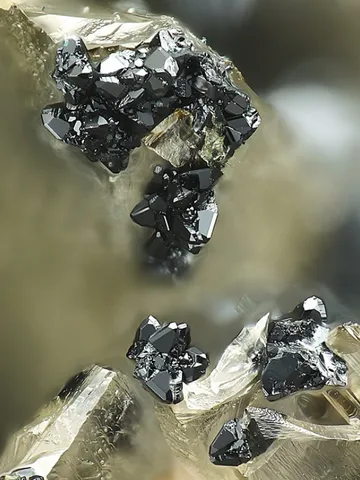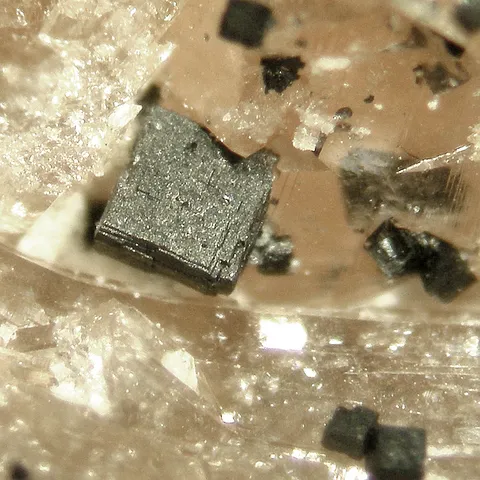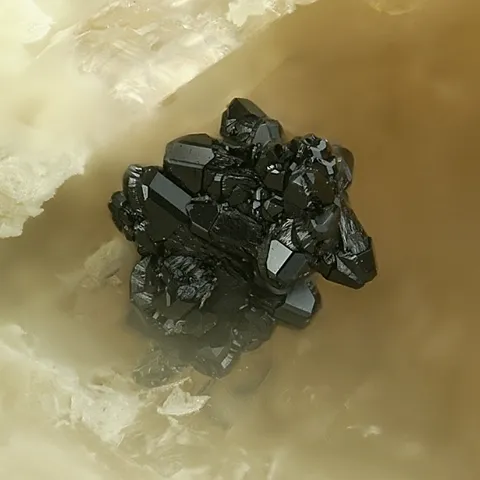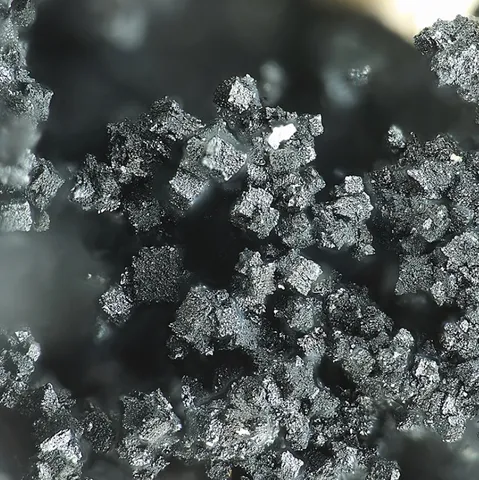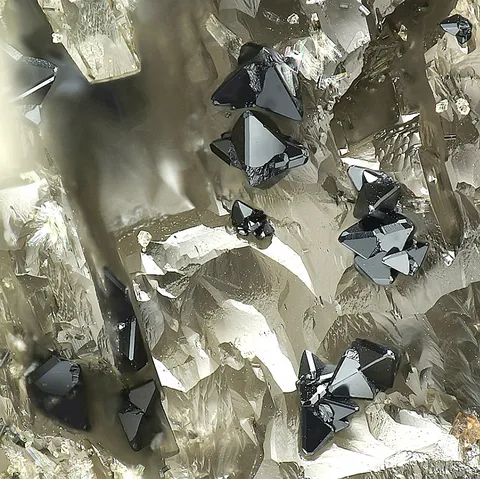BARBOSALITE
Class : Phosphates, arsenates, vanadates
Subclass : Anhydrous phosphates
Crystal System : Monoclinic
Chemistry : Fe3(PO4)2(OH)2
Rarity : Rare
Barbosalite is a secondary phosphate formed by hydration and oxidation of primary phosphates (mainly triphylite) in complex granitic pegmatites. It owes its name to the Brazilian mineralogy professor Aliuzio Licinio de Mirande Barbosa of the School of Mines of Ouro Preto. Its crystals are squat prisms up to very small cuboids (0.25 mm). Most often this mineral forms powdery coatings and encrustations of microcrystals. Its color is very dark blue to black.
Main photo : Barbosalite from the Sandamap pegmatite, Daures Constituency, Erongo, Namibia © Stephan Wolfsried
Barbosalite in the World
Twinning and special crystallizations
The contact twins are described following (001) as a composition plan.
Fakes and treatments
No fake or treatment identified for this mineral species.
Hardness : 5.5 to 6
Density : 3.6
Fracture : Conchoidal
Trace : Blue to dark green
TP : Opaque to translucent
RI : 1.760 to 1.840
Birefringence : 0.075
Optical character : Biaxial +
Pleochroism : Visible
Fluorescence : None
Solubility : Hydrochloric acid
Magnetism : None
Radioactivity : None

